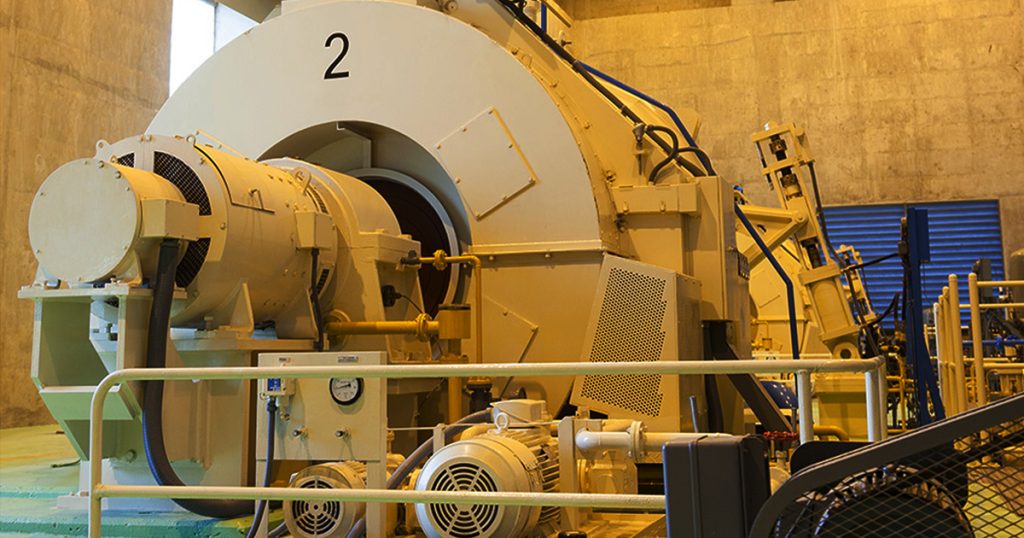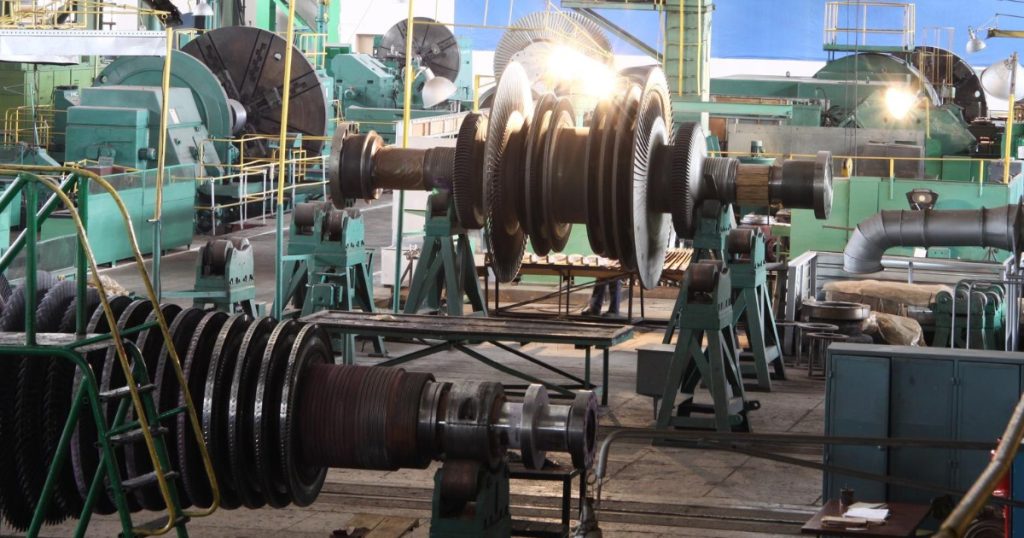Industrial downtime is expensive-and most of it stems from ignored or delayed maintenance on rotating equipment. From compressors to turbines, every rotating machine relies on timely and expert Rotary Equipment Service to function at peak performance. In this guide, we’ll break down what matters most when it comes to extending lifespan, avoiding emergency shutdowns, and maintaining production flow.

That’s why regular rotating equipment maintenance – rotary services are a non-negotiable for plant efficiency and safety. Below are seven proven tips to help your team improve reliability, reduce repair costs, and keep your operations running smoothly
1. Follow a Preventive Maintenance Schedule
Preventive maintenance involves regular checks and routine servicing before failures occur. These include bearing inspections, alignment tests, seal replacements, and oil changes. Following a strict maintenance schedule tailored to each equipment type helps you detect issues early and avoid last-minute shutdowns.
2. Embrace Predictive Maintenance Technology
Predictive maintenance relies on condition-monitoring tools like vibration analysis, thermography, oil sampling, and ultrasonic detection. These advanced diagnostics offer real-time health data, helping you intervene before a failure happens. Plants that adopt predictive techniques report lower emergency repair rates and longer equipment lifespans.
3. Balance and Align All Moving Components
Misalignment and imbalance cause excess vibration, which wears down seals, shafts, and bearings faster than usual. Laser alignment tools and in-situ balancing during commissioning or scheduled maintenance are crucial. Equipment that runs smoothly saves energy, performs better, and lasts longer.
4. Maintain Accurate Service Documentation
Logging maintenance history, part replacements, downtime causes, and performance metrics ensures transparency and accountability. When paired with a CMMS (Computerized Maintenance Management System), your data helps identify recurring issues and optimize repair strategies.
5. Train Teams for Equipment-Specific Protocols
Every rotary asset is different. Technicians should be well-versed with the OEM-recommended maintenance for each machine. Training should cover everything from lubrication standards to rotor handling and emergency shutdown procedures. Knowledge reduces human error and protects high-value machinery.
6. Execute Rotary Equipments Shutdown with Purpose
Strategically planned Rotary Equipments Shutdown periods provide the perfect window to inspect critical internal components, change worn-out parts, and upgrade systems. Unlike emergency stoppages, a planned shutdown gives your team time and control to do the job right-safely and efficiently.
7. Ensure Expert Rotary Equipment Installation & Commissioning
Poor installation is one of the leading causes of early failure. Partnering with specialists for Rotary Equipment Installation & Commissioning ensures that shaft alignment, load testing, and startup sequences follow global standards. This also sets a strong baseline for future maintenance.
How Our Rotary Equipment Service Supports Your Plant
At Swamina International, we go beyond manpower-we become an integral part of your plant’s reliability strategy. Our Rotary Equipment Service offerings include predictive diagnostics, performance audits, overhaul planning, and real-time reporting.
We focus on measurable outcomes-reduced breakdowns, lower energy usage, and longer machine life. Whether you need short-term shutdown support or long-term annual maintenance, we adapt to your industry, team, and goals.
Type of Rotary Equipment We Regularly Maintain
Swamina International has hands-on experience across industries-refineries, chemicals, food processing, and power generation. Our maintenance experts work on:
- Steam Turbines – Inspection, lubrication, and balancing for power-critical operations.
- Gas Turbines – High-temperature part checks and blade cleaning to ensure thermal efficiency.
- Compressors – From basic cleaning to Compressor overhauling maintenance with internal checks.
- Mixers / Agitators – Gear and seal maintenance for fluid consistency in processing lines.
- Fans and Blowers – Bearing alignment, vibration control, and flow performance checks.
- Expanders and Extruders – Shaft inspections and rotor health checks for smooth throughput.
- Conveyors and Rotary Drums – Chain tension, roller checks, and motor alignment.
- Gearboxes – Oil checks, shaft seals, and gear mesh inspections.
- Pumps – Suction analysis, impeller cleaning, and motor alignment.
This multi-equipment expertise makes us a reliable services provider for industries with diverse needs. Learn more about our complete Rotary Equipment Services including installation, shutdowns, and overhauling solutions.

What Is Rotating Equipment Maintenance?
It’s a specialized approach to maintaining machines with moving parts powered by motors or turbines. This includes lubrication, part alignment, balancing, bearing checks, and vibration monitoring to ensure optimal function and lifespan.
What Is the Major Cause of Compressor Failure?
The most common reasons are:
- Poor lubrication
- Overheating
- Misalignment
- Dirty or clogged filters
- Delayed maintenance schedules
Routine inspection and Compressor overhauling annual maintenance can significantly lower failure risks.
What Are the Three Types of Equipment Maintenance?
- Preventive – Scheduled servicing regardless of condition
- Predictive – Data-driven and condition-based intervention
- Corrective – Repairs post-failure
An ideal strategy blends all three depending on asset criticality.
What Is the Working Principle of a Reciprocating Air Compressor?
A Reciprocating compressor compresses air by means of a piston that is powered by a crankshaft. It works in cycles-drawing air into a cylinder, compressing it, and releasing it under pressure. It’s commonly used in applications requiring high pressure with intermittent use.
What Are the Safety Measures for Rotating Equipment?
- Lockout/Tagout (LOTO) procedures
- Protective guards for all moving parts
- Proper PPE (gloves, eyewear, etc.)
- Emergency shut-off systems
- Staff training for safe operating procedures
Safety reduces the risk of injury and equipment damage.
What Are the KPI for Rotating Equipment?
Some key performance indicators include:
- MTBF – Mean Time Between Failures
- OEE – Overall Equipment Effectiveness
- Energy Consumption Rate
- Maintenance Cost per Unit
Tracking these KPIs helps optimize maintenance frequency and resource allocation.
Which Type of Compressor Is Best?
It depends on the application:
- Use a Centrifugal Compressor for high flow, continuous operations.
- Choose a Reciprocating compressor for high-pressure, stop-start applications.
- Integrally geared type compressor is ideal for modular, efficient setups with multiple compression stages.
How to Fix a Stuck Compressor?
- Disconnect power
- Check for tripped breakers or burned fuses
- Inspect oil level and thermal sensors
- Rotate manually to check for mechanical jam
- Consult specialists to avoid motor burnout
What Are the Three Stages of Compressor Operation?
- Suction – Air enters the chamber
- Compression – Air is pressurized
- Discharge – Compressed air exits into the system
Keeping each stage healthy is key to performance.
Maintenance That Keeps You Competitive
Rotating equipment is the foundation of industrial uptime-and maintaining it well is a strategic move. From pumps to turbines, fans to extruders, these machines can either power your growth or slow it down.
Investing in expert-led Rotary Equipment Service is not just about repairs-it’s about resilience. It helps you save energy, reduce costs, and keep operations running without disruption.
Why We’re Different from Others
Swamina International provides customized solutions that surpass standard maintenance.. With deep knowledge in Rotary Equipments Overhauling, installation, shutdown, and diagnostics, our goal is to empower your plant with long-term reliability. You don’t just get service-you get industrial strategy.
We don’t just stop at rotary equipment. Our industrial services cover a wide spectrum-from preventive overhauling to critical maintenance across multiple equipment types.
